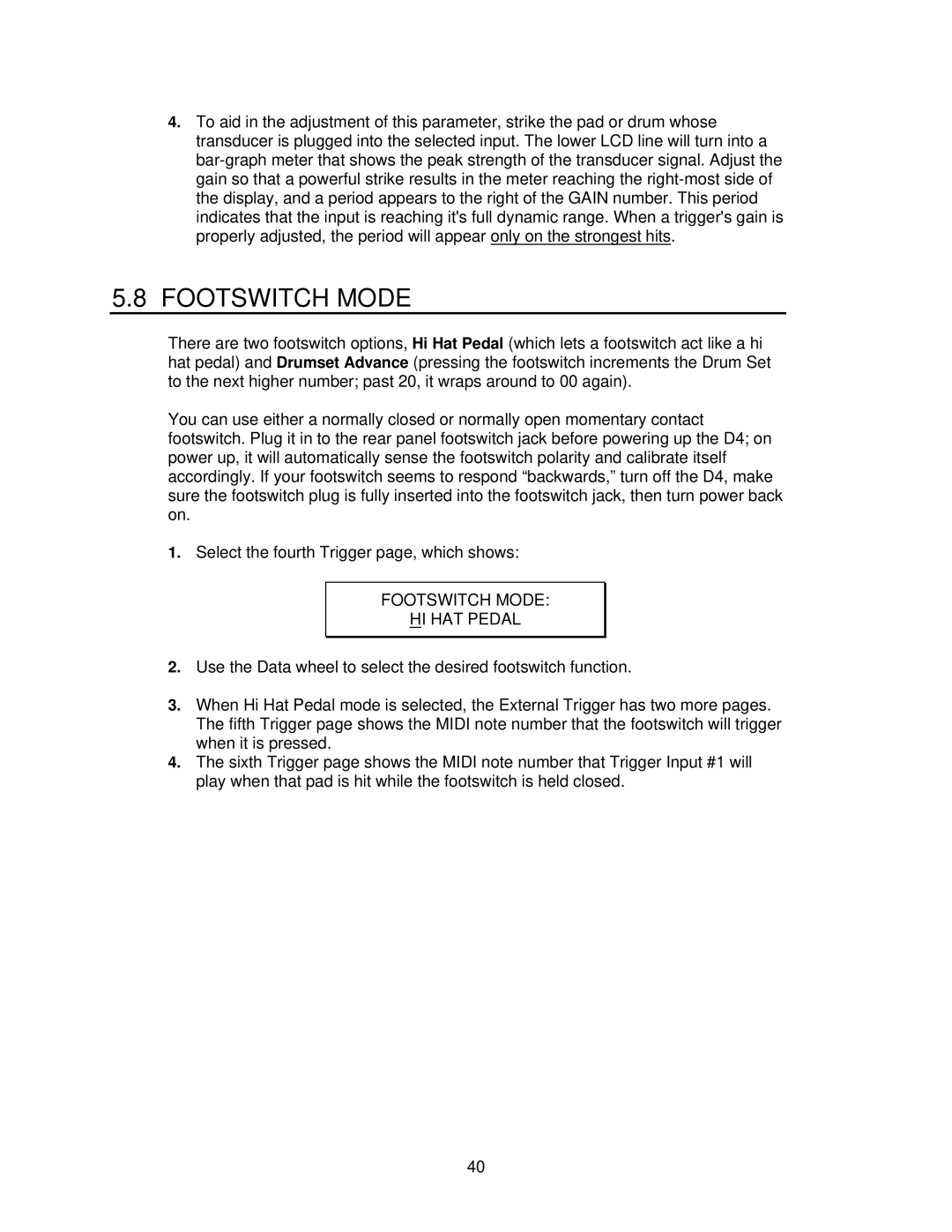
4.To aid in the adjustment of this parameter, strike the pad or drum whose transducer is plugged into the selected input. The lower LCD line will turn into a
5.8FOOTSWITCH MODE
There are two footswitch options, Hi Hat Pedal (which lets a footswitch act like a hi hat pedal) and Drumset Advance (pressing the footswitch increments the Drum Set to the next higher number; past 20, it wraps around to 00 again).
You can use either a normally closed or normally open momentary contact footswitch. Plug it in to the rear panel footswitch jack before powering up the D4; on power up, it will automatically sense the footswitch polarity and calibrate itself accordingly. If your footswitch seems to respond “backwards,” turn off the D4, make sure the footswitch plug is fully inserted into the footswitch jack, then turn power back on.
1.Select the fourth Trigger page, which shows:
FOOTSWITCH MODE:
HI HAT PEDAL
2.Use the Data wheel to select the desired footswitch function.
3.When Hi Hat Pedal mode is selected, the External Trigger has two more pages. The fifth Trigger page shows the MIDI note number that the footswitch will trigger when it is pressed.
4.The sixth Trigger page shows the MIDI note number that Trigger Input #1 will play when that pad is hit while the footswitch is held closed.
40
